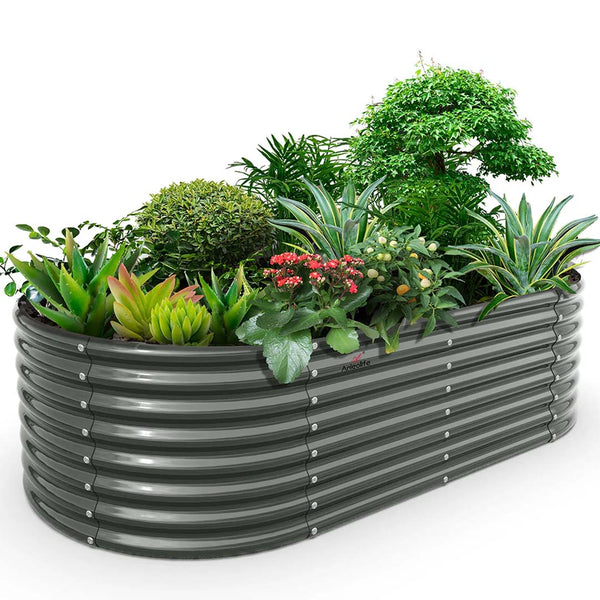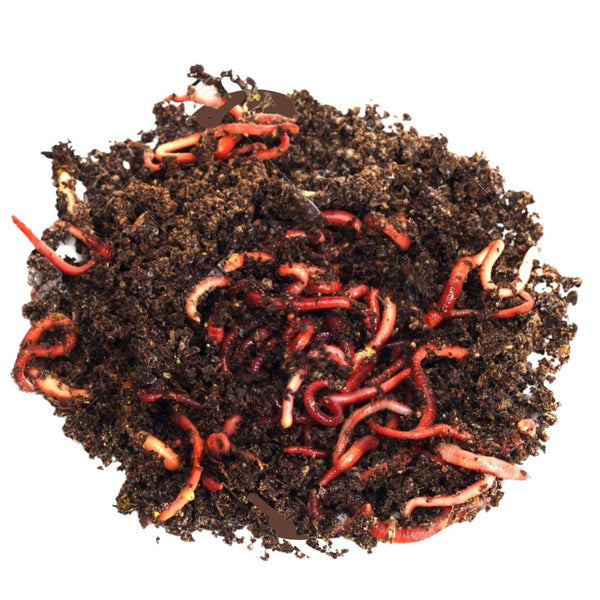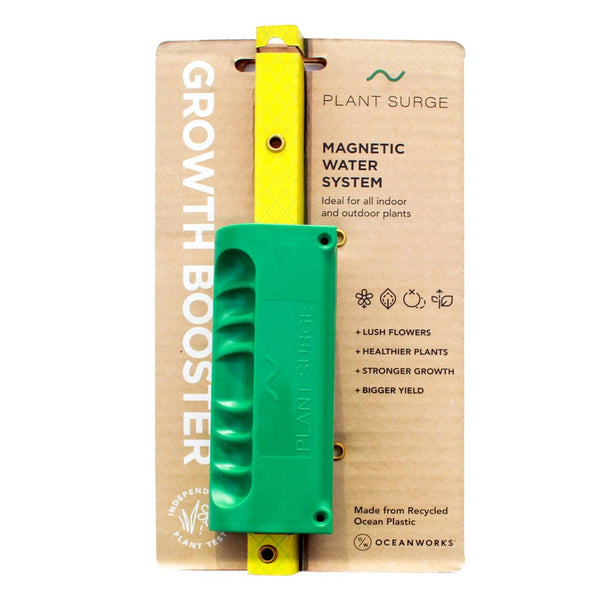The DIY Electroculture System That Anyone Can Build For Under $20

Understanding Electroculture Gardening
Introduction to Electroculture
Electroculture gardening is a nifty way to give your plants a little zap of life using electrical currents or fields. It's like giving them a gentle nudge to grow better and stronger without relying on chemical fertilizers and pesticides. This method is catching on because it promises bigger harvests and a greener thumb. By tapping into the energy that surrounds us, we can make our gardens more fruitful and eco-friendly. And the best part? You can try diy electroculture right in your backyard without breaking the bank.
Historical Roots of Electroculture
Electroculture isn't just a new fad; it's got some serious history behind it. Way back in the late 1700s, curious minds started poking around to see how electricity could help plants grow. Big names like Sir Humphry Davy and André-Marie Ampère were among the first to play around with this idea. They noticed that plants hanging out near electrified train tracks or places with lots of lightning seemed to be doing better than their non-electrified buddies (Electro Culture).
Fast forward to 1918, and the British Electroculture Committee was born, tasked with figuring out how electricity could boost plant life. Their experiments showed some pretty exciting results, with crops thriving under controlled conditions. These early efforts laid the groundwork for today's electroculture techniques, which are all about finding smarter ways to garden.
| Historical Milestone | Year | Key Figure/Group |
|---|---|---|
| Initial Observations | 1780s | Various Scientists |
| British Electroculture Committee Established | 1918 | British Government |
As we explore electroculture gardening, it's cool to see how far we've come thanks to those early pioneers. Knowing the history helps us appreciate why this method might be worth trying in our own gardens. If you're curious about the perks of electroculture, check out our article on benefits of electroculture.
Benefits of Electroculture Gardening
Electroculture gardening is like giving your plants a little pep talk from Mother Nature herself. By tapping into the energy around us, we can help our plants grow stronger and healthier while keeping things green and eco-friendly. Let's dig into what makes this gardening method so special.
More Bounty from Your Garden
One of the coolest things about electroculture gardening is how it can make your garden more productive. Imagine getting up to 20% more veggies without using extra water—sounds like a win-win, right? Studies show that this method can cut water use by half, which is great news for those of us who want to save on the water bill and still get a bumper crop.
Some plants really love this method. Take peas, for example—they sprout 26% faster and give us 18% more to munch on compared to old-school gardening. So, whether you're growing in a city plot or out in the country, you can get more from your garden space.
| Crop Type | Yield Increase (%) | Water Usage Reduction (%) |
|---|---|---|
| Peas | 18 | 50 |
| General Crops | Up to 20 | Up to 50 |
Healthier, Happier Plants
Electroculture doesn't just give us more food—it makes our plants healthier, too. Early research hints that plants grown with a little electric boost might pack more nutrients, taste better, and have a nicer texture. So, not only do we get more to eat, but what we eat is better for us.
This method also speeds up how fast seeds sprout, which means we can plant and harvest more often. That's a big plus if you live somewhere with a short growing season (Electro Culture). Healthier plants can fight off bugs and diseases on their own, so we don't have to rely on chemicals, making our gardens more earth-friendly.
By trying out electroculture, we can grow gardens that are not only bountiful but also kind to the planet. It's a great way to work towards being self-sufficient and living sustainably. Want to try it yourself? Check out our guide on diy electroculture.
Implementing Electroculture Techniques
We're diving into the world of electroculture to give our gardens a little extra spark. Let's talk about two nifty tricks: making our own electroculture antennas and giving our plants a gentle zap of electricity. These methods are easy on the wallet and fit right in with our eco-friendly gardening vibe.
DIY Electroculture Antennas
Whipping up our own electroculture antennas is a fun and simple project. You can use copper wire or galvanized steel, both great at grabbing energy from the air. Placing these antennas around our plants helps create an electric field that boosts their growth.
Here's how to make your own DIY electroculture antenna:
- What You Need:
- Copper wire (14-16 gauge is perfect)
- A solid base (like a wooden stake)
- Optional: extra stuff for grounding
- How to Make It:
- Cut the copper wire to about 3-4 feet.
- Twist it into a loop or spiral to catch more energy.
- Secure the wire to the base.
- Stick the base into the ground near your plants, keeping the wire above the soil.
- Where to Put It:
- Align the antenna north-south to make the most of the earth's natural energy flow.
Follow these steps, and you'll have electroculture antennas that help your plants flourish.
Application of Electrical Current
Another cool trick in electroculture is giving the soil or plants a low-level electric buzz. This wakes up the soil's natural processes, making plants healthier.
- How It Works:
- The electric current is low voltage and safe for plants. It gets the soil's microbes moving, boosting good bacteria and fungi that help with nutrient cycling and soil health (Money Saving Era).
- This can lead to stronger roots, better moisture retention, and more resistance to pests and diseases.
- Setting It Up:
- Use a battery or solar panel to create a simple circuit.
- Connect copper wires to the soil or plant base for good energy transfer.
- Why It's Great:
- This method cuts down on the need for chemical fertilizers and pesticides, which is great for our eco-friendly gardening goals (Electro Culture).
- It can boost crop yields and plant health, making our gardening efforts more rewarding.
By trying out these techniques, we can tap into the magic of electroculture to grow gardens that are both bountiful and green. For more tips and tricks on electroculture, check out our articles on electroculture gardening and electroculture antenna designs.
Success Stories of Electroculture
Electroculture gardening is like the secret sauce for plants, making them grow faster and stronger. We've come across some pretty cool stories that show how it can help seeds sprout quicker and make farming more eco-friendly.
Improved Seed Germination
One of the coolest things about diy electroculture is how it speeds up seed sprouting. Imagine getting your veggies faster! Studies show that electroculture can really crank up germination rates, which means you can get more crops in less time. This is a game-changer for places where the growing season is short. For example, research found that using electroculture on peas boosted germination by 26% and increased the final harvest by 18% compared to those that didn't get the electric touch (Agtecher).
| Crop Type | Germination Increase | Yield Increase |
|---|---|---|
| Peas | 26% | 18% |
| General Crops | Up to 20% | N/A |
This quick sprouting not only makes the most of the growing season but also helps plants grow stronger to face whatever Mother Nature throws at them.
Sustainable Agriculture Practices
Electroculture isn't just about getting more veggies; it's about doing it in a way that's good for the planet. By boosting the good stuff in the soil, electroculture helps friendly bacteria and fungi do their thing, which is super important for keeping the soil healthy (Money Saving Era). This means less need for chemical fertilizers, which is great news for anyone who cares about the environment.
Plus, electroculture can cut water use by up to 50%, which is a big deal in places where water is hard to come by.
| Benefit | Impact |
|---|---|
| Increased Crop Yields | Up to 20% |
| Reduced Water Usage | Up to 50% |
| Enhanced Soil Microbial Activity | Improved nutrient cycling |
These stories show how electroculture can help grow tougher, healthier plants while being kind to the Earth. By tapping into nature's power, we can have gardens that flourish without needing a ton of extra stuff. If you're curious about trying this out, check out our resources on electroculture antennas and electroculture gardening techniques for some handy tips and tricks.
Criticisms and Controversies
Alright, folks, let's get real about diy electroculture. While some folks swear by it, others raise an eyebrow. So, what's the deal with this gardening method? Let's break it down.
Scientific Perspectives on Electroculture
Electroculture fans are all about using antennas and magnets to tap into Earth's vibes. But here's the kicker: many scientists call it pseudoscience. Why? Because there's no solid proof showing how electricity boosts plant growth. Since 1968, the scientific world hasn't exactly been buzzing with peer-reviewed studies on electroculture. Most of what you find is more "I tried it, and it worked!" than "Here's the data".
Sure, there are claims of bumper crops and less water use, but the science crowd isn't buying it. Some research hints at plants getting tougher against bugs and diseases, but these claims often lack the backing of hardcore scientific research. It's like relying on your buddy's story instead of hard facts.
Challenges and Limitations
Electroculture has had its ups and downs. Back in the day, the British Electro-Culture Committee shut down in 1936 because the results were all over the place (Agtecher).
Plus, Mother Nature can throw a wrench in the works. Soil quality, moisture, and local weather can mess with electroculture's mojo, making it tough to get the results you want.
| Challenge | Description |
|---|---|
| Lack of Scientific Validation | Not much solid research backing electroculture claims. |
| Erratic Results | Past attempts have been hit or miss. |
| Environmental Variables | Soil and weather can mess with effectiveness. |
Electroculture might sound like a cool way to boost your garden, but it's got its critics and hurdles. Knowing the scoop can help you decide if it's worth a shot in your backyard. For more on the ups and downs of electroculture, check out our articles on electroculture gardening and does electroculture work.























